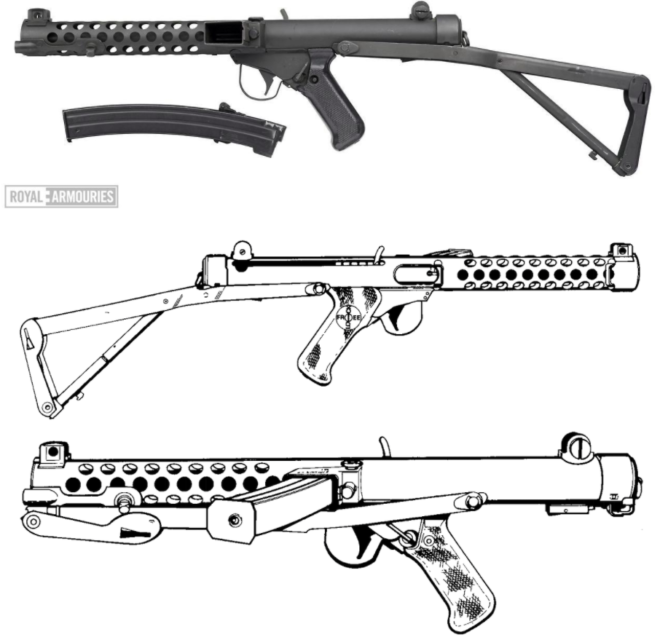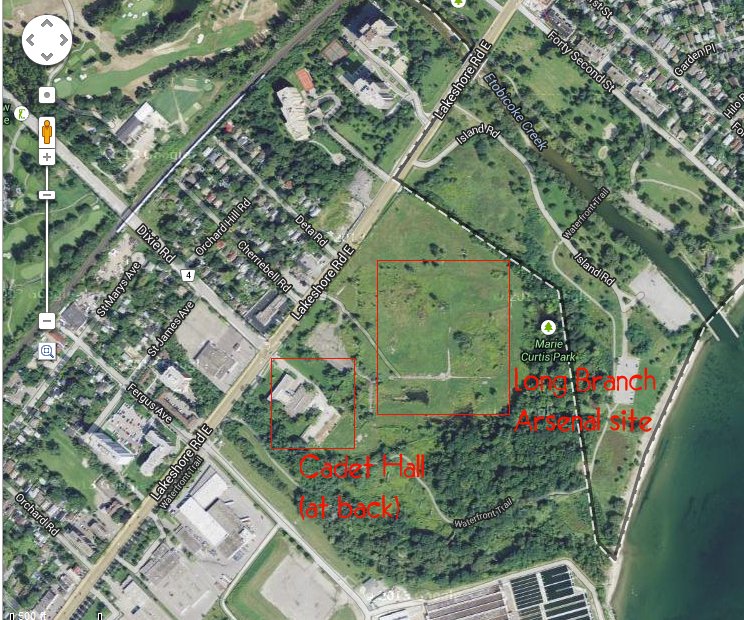The Canadian army kept the Sten as their standard SMG for several years after the war, but eventually had to come up with a replacement weapon. The selection committee eventually settled on Sterling SMG, which the British army had been using, with a few modifications. Historical Firearms has the details:
…in November 1956, the first Anglo-Canadian Submachine Gun Steering Committee meeting was held. The Canadians liked the Sterling and requested a manufacturing license. They did, however, wish to make some changes to the weapon before they adopted it.
These changes included a small bayonet boss and redesigned lug reinforcement for the L1A1 rifle bayonet, a simpler trigger mechanism designed by Sterling engineer Les Ruffell, a height adjustable front sight taken from the L1A1, an adjustable rear sight with wider sight protectors. In early 1957, these changes were encapsulated in a sample model assembled from Fazakerly-made L2A3s, these were re-designated the L2A4. Later changes were also made to simplify the Canadian Sterling’s end cap and a squarer brass deflector and hand stop.The primary internal departures from Patchett’s original design were the decision to have a single rather than double return spring and to use a non-helically grooved bolt. Instead using an improved Sten breech block, this had a number of advantages including being able to use existing tooling, avoiding paying royalties for Patchett’s bolt and simplifying production. Compared to the Sterling-made guns the C1 was certainly simpler using stampings and spot-welding.
However, the C1 retained a surprising level of parts commonality with many parts interchangeable between both Canadian and British weapons. This commonality included magazines, however, the Canadians also simplified the magazine’s design. They dispensed with Patchett’s roller system and designed their own magazine which held 30, rather than 34 rounds, but could be used in all Sterling-pattern guns.
Two experimental suppressed C1s were made by Long Branch to replace the Sten MkII(s) and the MkVI, but the Sterling-Patchett L34A1/Mk5 was adopted instead. Canada purchased at least 5 L34A1s.
The Long Branch Arsenal was just west of Toronto along Lakeshore Road in what is now Mississauga (my cadet hall was adjacent to the former factory site):
I didn’t realize the site had been active that late … I’d assumed it was demolished shortly after the Korean War.





